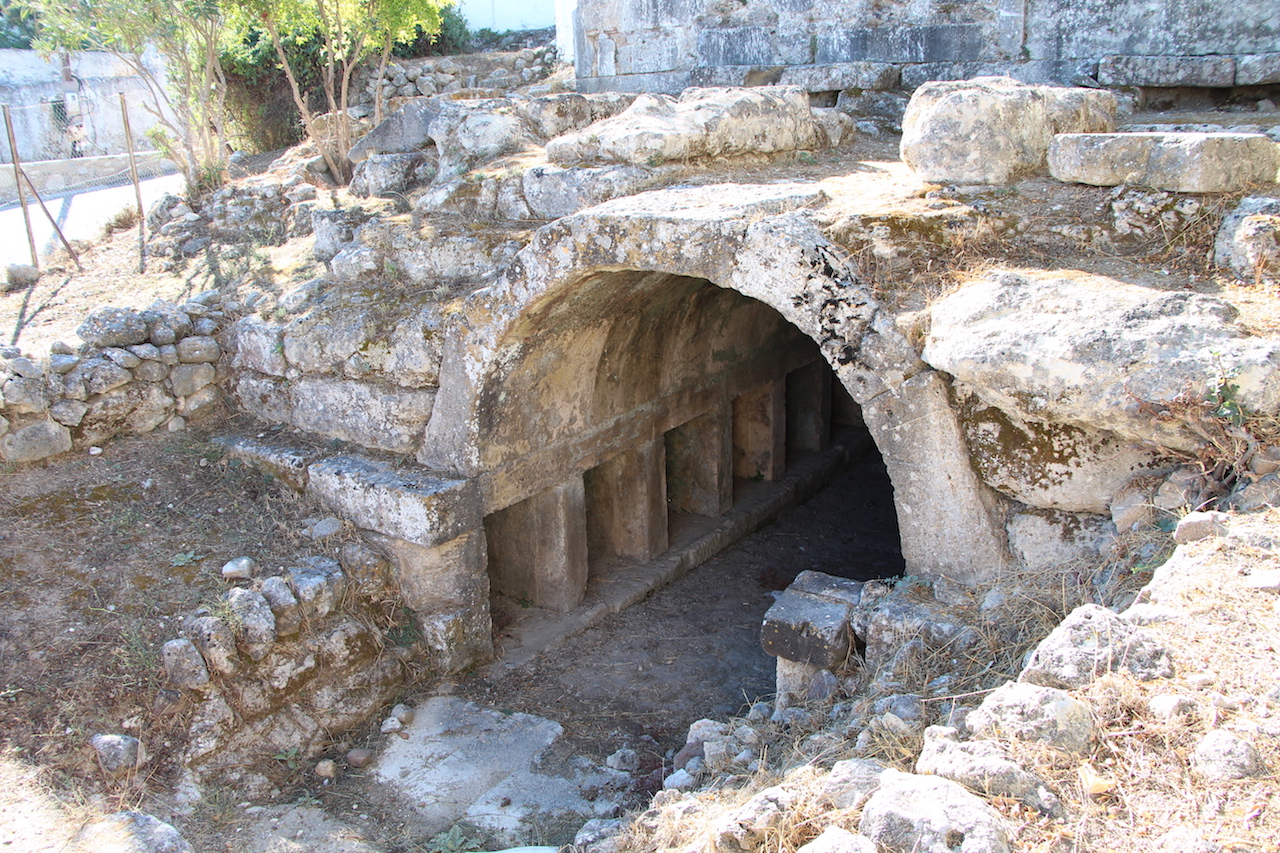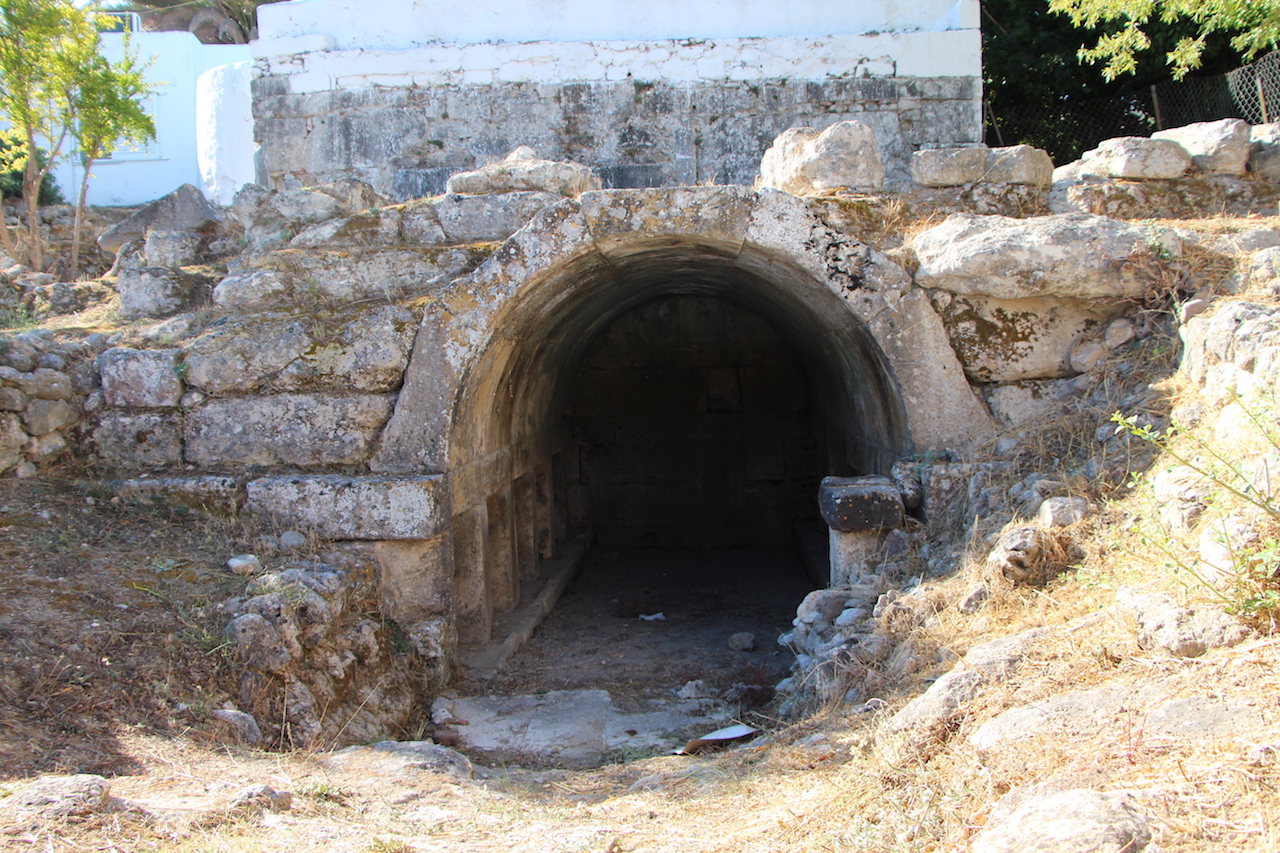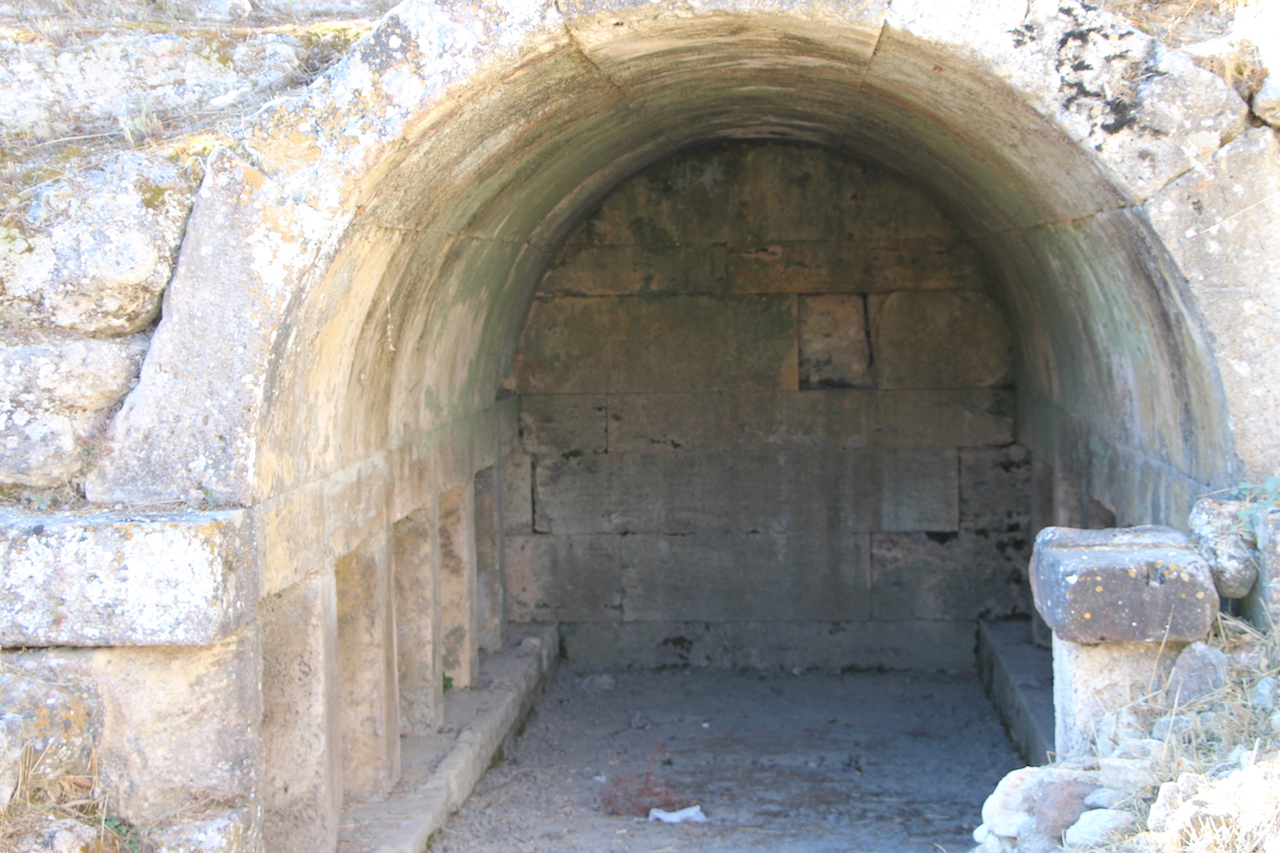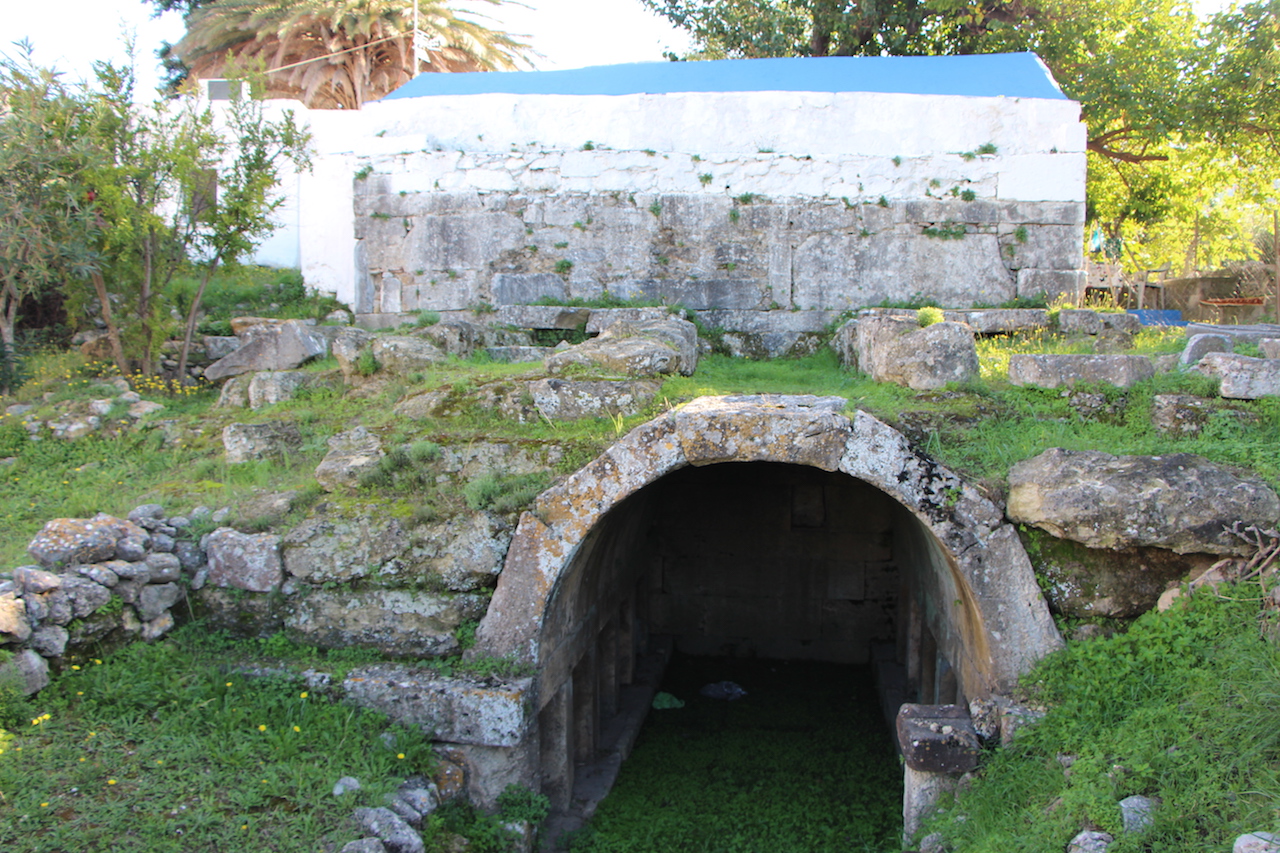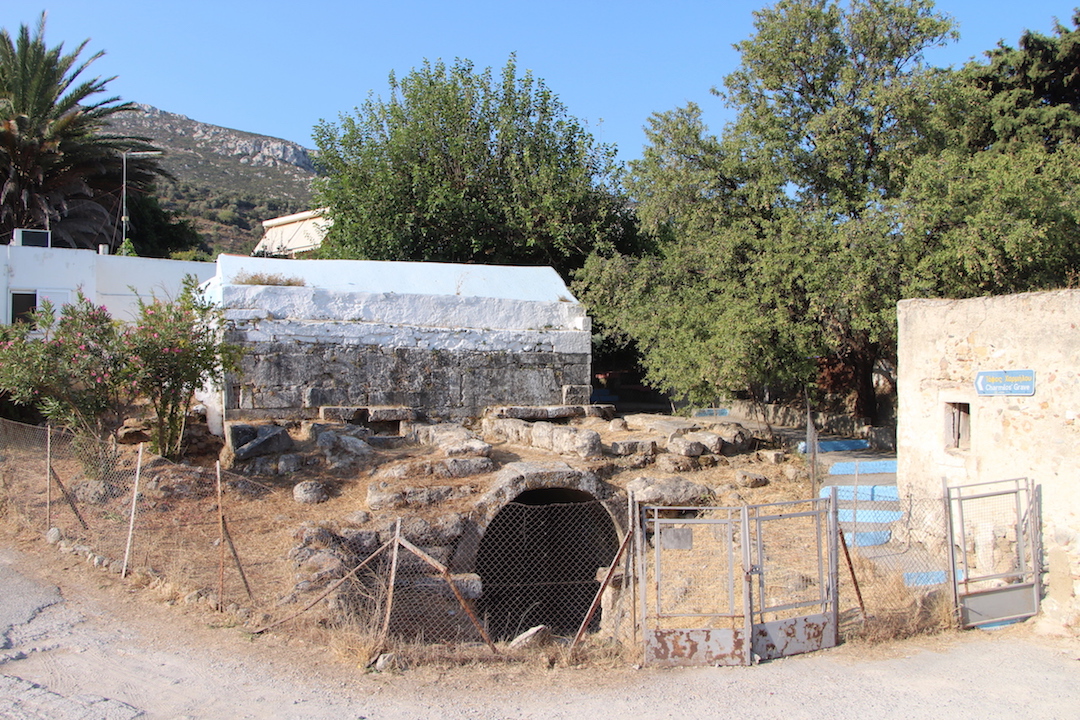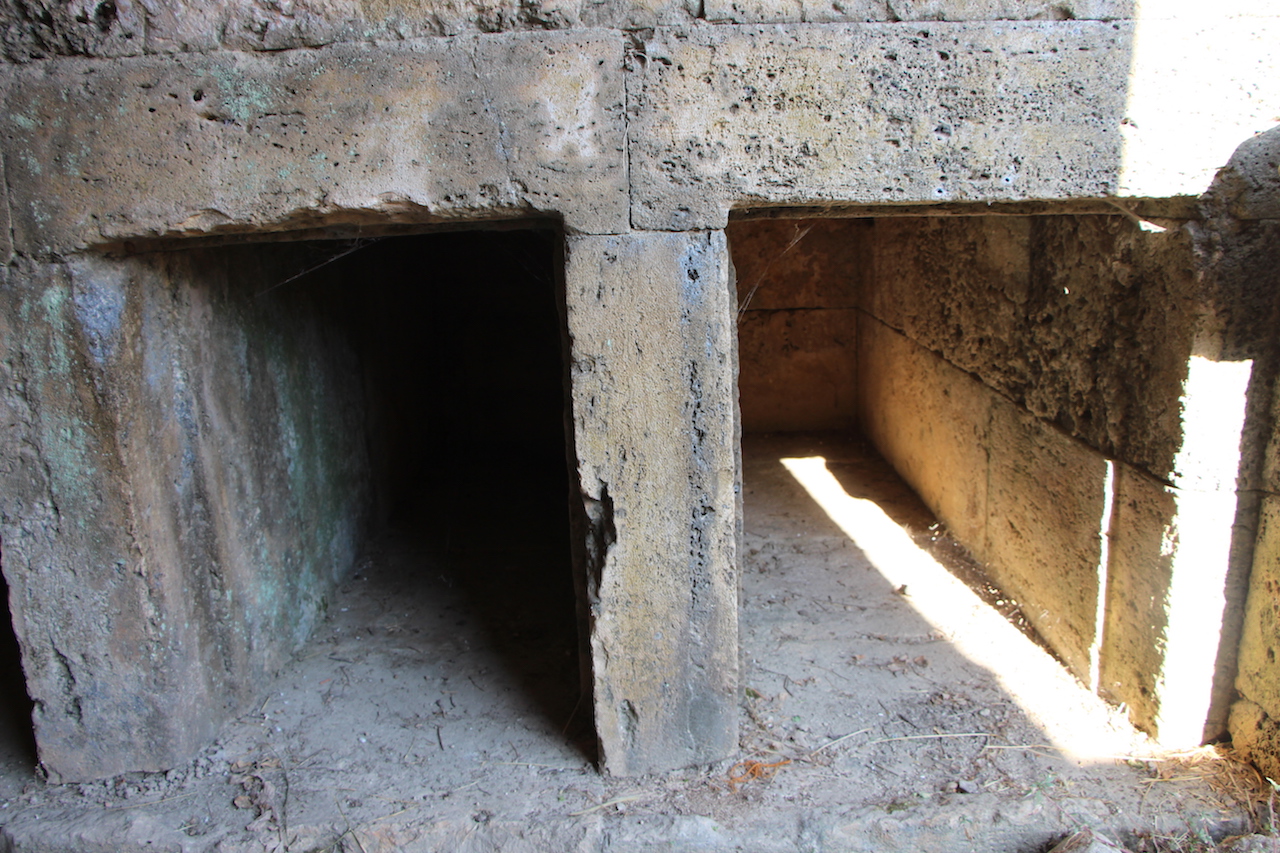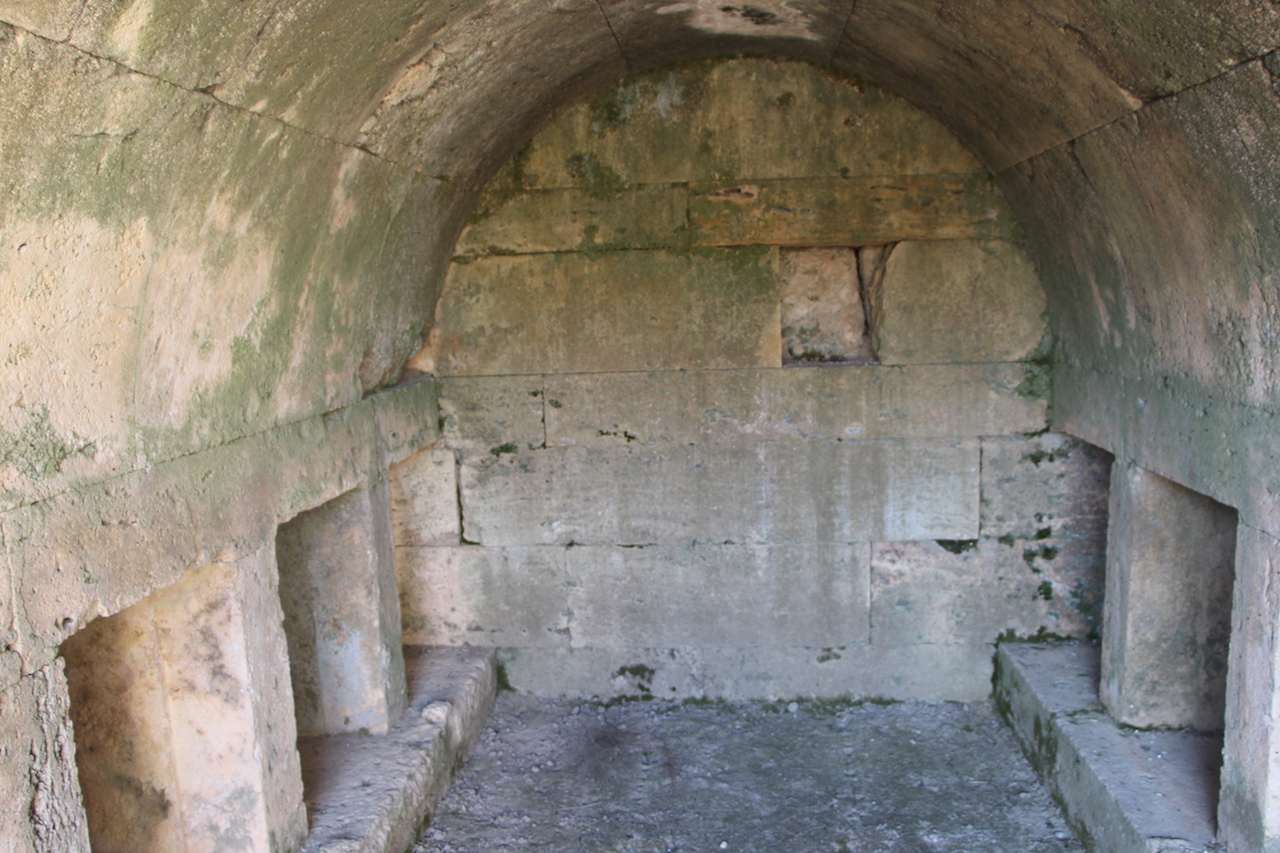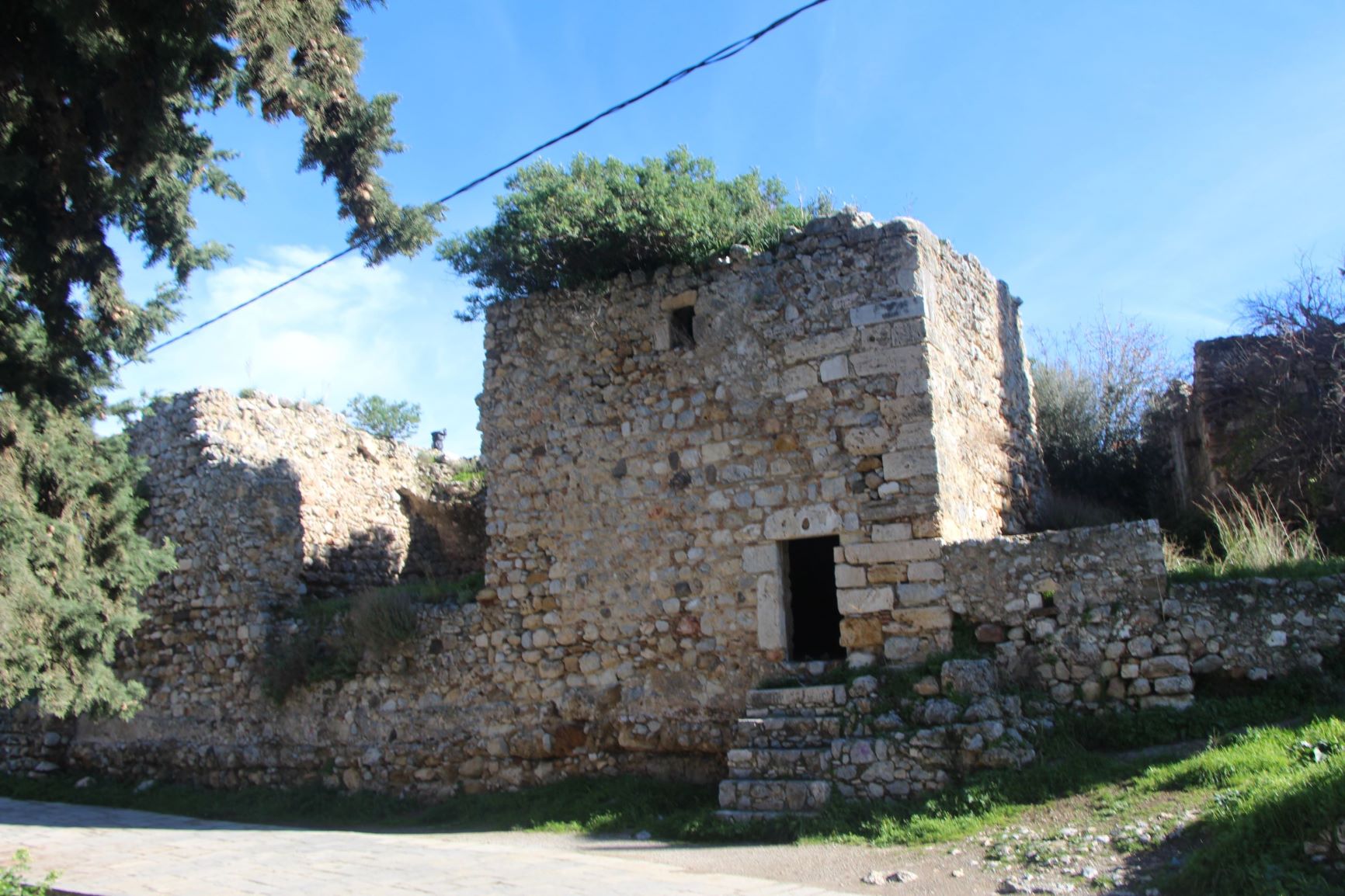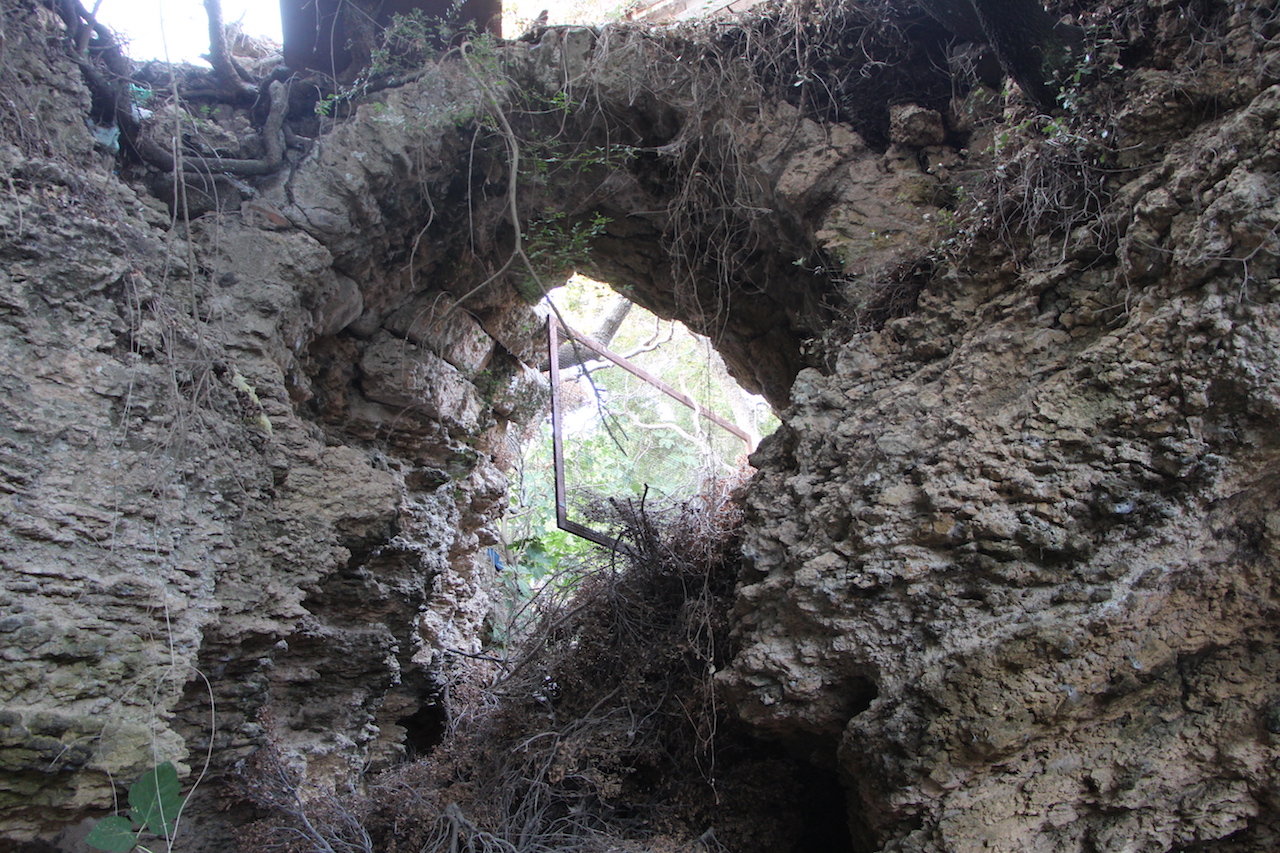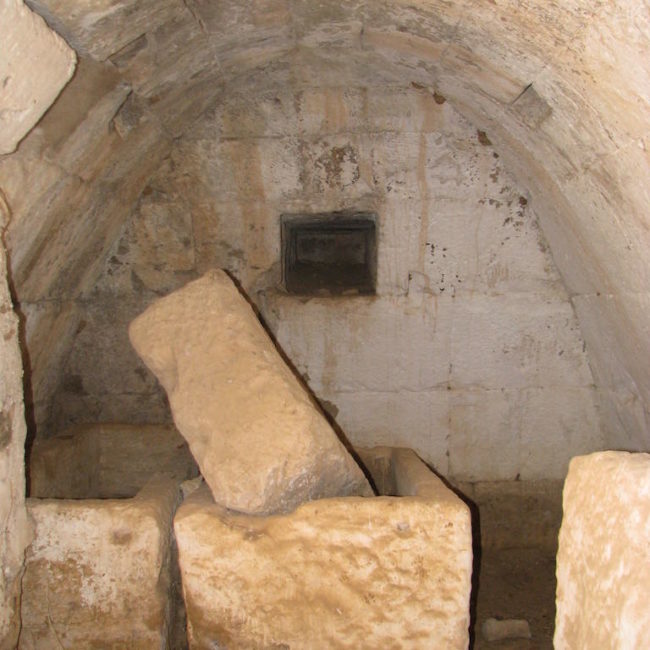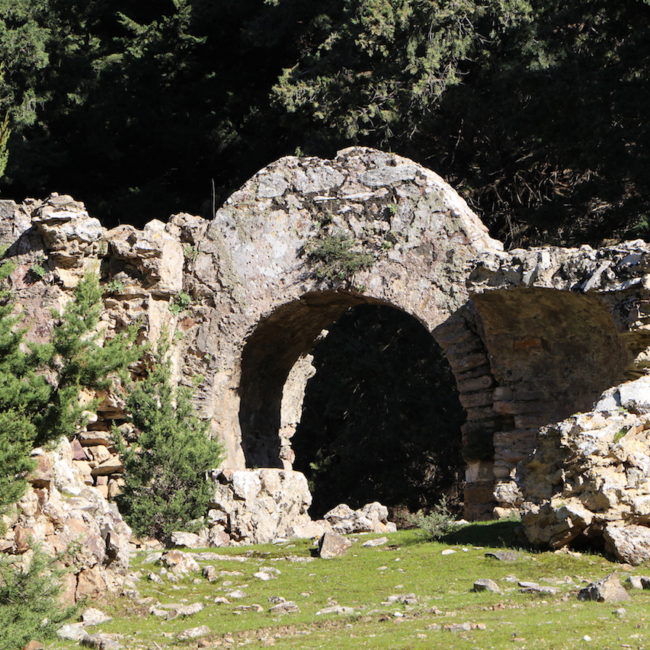Harmilos’ grave (or Harmylos) is situated in Harmyli in the Peripatos area of Pyli. This family grave, built of limestone and white marble, was dedicated to Harmylos (Harmilos), possibly a mythical king or hero of Kos, from whom the Harmelean line is descended, or a rich landowner who built the grave on his land. The grave’s roof is in the form of an arch while on both sides there are a series of tombs symmetrically facing each other, forming 12 uniformly sculptured crypts, for the placement of the dead. A portico was believed to lead to the entrance of the grave. On top of the grave, there was the heroon (shrine or portico) of Harmylos, with sculpted marble, which is now waled into the neighbouring church of Ypsosis tou Timiou Stavrou (Exaltation of the Holy Cross). An inscription also now part of the church seems to indicate that the structure was built around 300 years B.C. The Bavarian archaeologist Ludwig Ross, visiting Kos in 1844, characterised the tomb of Harmilos as one of the best preserved monuments of its kind that he had discovered in his travels.
This underground arched structure was used during the early christian times as a place of worship and, later on, as a hideout and a shelter, namely during the invasion of Kos by the German troops in 1943. Nowadays, Harmilos’ grave is situated 2 meters below ground level. 150 meters west of the grave is the Harmyli spring with its abundant waters which supply water and irrigate the village of Pyli and a large part of its valley. According to local tradition, a tunnel connects the grave and the water spring.





